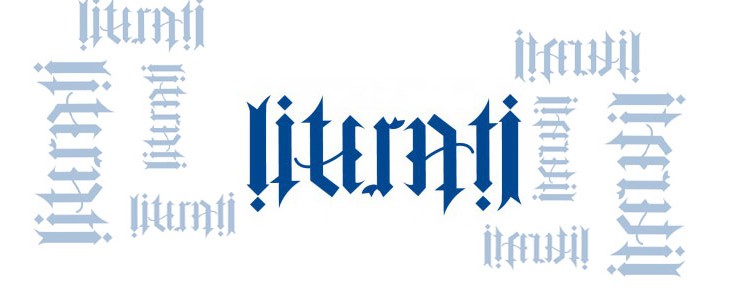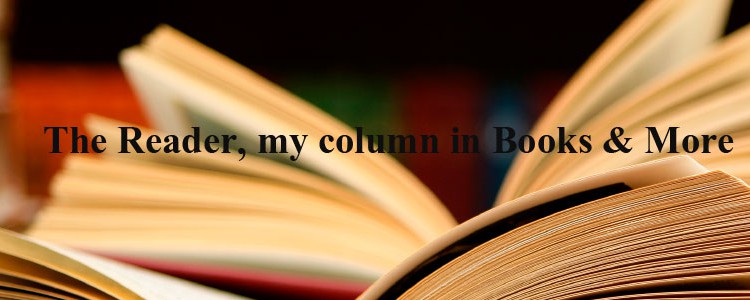http://www.hindustantimes.com/Brunch/Brunch-Stories/Once-Upon-A-Time-In-India/Article1-1023602.aspx
Once upon a time in India
Jaya Bhattacharji Rose, Hindustan Times
March 09, 2013
First Published: 12:11 IST(9/3/2013)
Last Updated: 19:27 IST(9/3/2013)
1860s London was agog with the Codrington case. It was a juicy story involving vice-admiral Codrington and his wife Helen, accused by her husband of having had an affair with Colonel Anderson, that was unfurling in the divorce courts. During the proceedings, front-page news at the time, the skewed slant of the legal system towards women became apparent. One of the key witnesses was Helen’s friend, Emily Faithfull or ‘Fido’, a leading member of the first wave of the British women’s emancipation movement and owner of The Victoria Press. Emma Donoghue’s The Sealed Letter recreates the events in her novel. She relies on contemporary accounts of the period, but for the sake of story, compresses the events spread over some years to a few months of 1864. She uses artistic licence to reveal the contents of the sealed letter that were used in the courtroom but never made public.
Madhulika Liddle
The author of The Englishman’s Cameo, set her detective, Muzaffar Jang, in 17th- century Delhi. “Commercial fiction dependent upon mythology is mistakenly clubbed with historical fiction,” she says. These are the joys of reading well-told historical fiction – a rollicking good story, but pinned in facts (hugely dependent on meticulous research) combined with attention to detail.

What is historical fiction?
A historical fiction society website says, “To be deemed historical, a novel must have been written at least 50 years after the events described, or have been written by someone who was not alive at the time of those events (who therefore approaches them only by research).” Writer Sheba Karim (whose forthcoming novel revolves around Razia Sultan) describes them as “novels set in a past time period, which feels different from our own in terms of aspects like technological advancement, scientific understanding, political systems and modes of transport so that the author must include rich, descriptive detail to give the reader a strong sense of time and place.”
The scene in India
In Britain, it is a hugely successful genre, spawning an association, awards and wide acclaim. Jenny Barden, author and organiser of the Historical Novel Society (HNS) conference held in London in September 2012, comments that of the 13 titles longlisted for the Man Booker prize in 2011, more than half were in some sense ‘historical’. Of the six titles recently shortlisted for the Orange Prize 2012, four were historical. Hilary Mantel’s Wolf Hall won the Man Booker Prize in 2009 and last year, the sequel, Bring Up The Bodies, won the prize again. Now, the historical fiction genre is doing well here too.

Diana Preston One half of the husband-wife team behind the Empire of the Moghul series says the conflicts of the Mughals’ lives caught their imagination. “And historical fiction offered the best scope for conveying that excitement.”
The Grand Mughals
Alex Rutherford’s Empire of the Moghul series has also been a big success in India. ‘Alex Rutherford’ is the pseudonym of husband-and-wife team, Diana and Michael Preston. “We chose to fictionalise the story of the Mughal emperors after reading the source material beginning with The Baburnama – the first biography in Islamic literature – through to the court chronicles of the later emperors,” wrote Diana in an email. “The conflicts of their lives caught our imagination and historical fiction seemed to offer the best scope for conveying the excitement of what happened, since the it offers greater freedom to create dialogue, explain motivation, interpret silences in the sources than non-fiction.” According to the Rutherfords, one of the great pleasures of historical fiction is delineating the characters. “What caught our attention particularly was how the Mughal dynasty, outwardly so opulent and successful, carried the seeds of its own destruction within it. Their tradition – brought with them from West Asia – was for familial rivalries expressed in their saying ‘taktya, takhta’, ‘throne or coffin’. The Mughals’ greatest enemies were not their external foes but each other. Exploring their jealousies and feuds was absorbing.”
Who was Mira Bai’s husband?
Kiran Nagarkar Nagarkar’s Cuckold is one of the best known in the genre. “The book has a narrative epic. At the same time it tends to be philosophical,” says the author. 
Kiran Nagarkar’s brilliant Cuckold (a tale told from Mira Bai’s husband’s perspective) leads among local historical-fiction novels by being continuously in print since it was first published in 1997. “I do not see Cuckold as historical fiction but as a very modern book,’ Nagarkar says. “I wasn’t trying to write anything factual, but luckily it fell into place. The book has a narrative epic. At the same time it does something very underhand, it tends to be philosophical – personal ruminations, state craft, and the science of retreating.”
More tales from the past
Indu Sundaresan, author of the popular Taj Mahal trilogy (The Twentieth Wife, The Feast of Roses, The Shadow Princess) about Mehrunnisa aka Empress Nur Jahan, the most powerful woman in the Mughal empire, says she always daydreamed a lot. “My love for history, and storytelling, came from my father,” she explains. “Dad was a fighter pilot in the Indian Air Force, and at every place he was posted, he’d take us to visit the forts and palaces and fill our heads with tales of the kings and queens who inhabited them. That’s why, I think, I write historical fiction.”
In her book The Englishman’s Cameo and The Eighth Guest & Other Muzaffar Jang Mysteries, Madhulika Liddle sets her detective hero loose in 17th-century Delhi. One reason it’s so popular is that it lets you time travel in the city you thought you knew.
The young-adult niche
Subhadra Sen Gupta, known for her historical fiction set in ancient and medieval India, says that recreating the time and life of people is the real challenge when it comes to hooking younger readers. “I also travel to historical places in search of locations because the descriptions of places are crucial.”

Subhadra Sen Gupta The author of Let’s Go Time Travelling likes to visit historical places. “Recreating a time and the life of people is the real challenge,” she says
Chitra Banerjee Divakaruni, the author of Neela: Victory Song, a young-adult novel set during the freedom movement, says there isn’t that much available for younger readers. “It is very important for young readers to understand history and their heritage,” she says. “It helps them make sense of the contemporary world. It teaches them about the link between cause and effect. Historical fiction, often full of action and excitement and suspense, draws young readers into that time and teaches them history in a fun way.” She rubbishes the theory that historical fiction is easier to write. “Much more research has to be done about the period. For Neela: Victory Song, I interviewed my mother, who was a young girl during that time.” The common factor binding these writers is not necessarily the genre, but their attention to detail and rigorous research. They are meticulous in getting their facts right about their protagonists and reading around the period including contemporary accounts but presenting it differently in a non-textbook fashion.
History or Mythology?
Unfortunately in India, mythology-driven fiction is often mistakenly clubbed with historical fiction. Some instances of this confusion are David Hair’s young-adult trilogy Return of Ravana (Pyre of Queens, The Ghost Bride and more); Ashok Banker’s The Forest of Stories, Krishna Udayasankar’s Govinda, and Ashwin Sanghi’s The Krishna Key.
But historical fiction is everywhere. Publishers are nurturing this genre and it has steady sales. Maybe the current outburst of publications on the Indian literary landscape such as Cyrus Mistry’s Chronicle of a Corpse Bearer; Irfan Master’s A Beautiful Lie; Biman Nath’s The Tattooed Fakir; Manreet Sodhi Someshwar’s The Taj Conspiracy and Amandeep Sandhu’s Roll of Honour bode well for those who like a good historically accurate yarn.
Prizes and readers
The market for the historical fiction genre is growing. Previously the Historical Writers’ Association (HWA) together with Goldsboro Books set up the £2,000 HWA-Goldsboro Crown for Debut Historical Fiction written by a previously unpublished-in-fiction author; now the HNS has founded the £5,000 Historical Novel Society International Award for an unpublished work of historical fiction written by any author (whether previously unpublished or not). Add these to the prizes already well-established for historical fiction, and there are now a good range of awards for any writer in the genre to aim for.
Alexandra Pringle, editor-in-chief at Bloomsbury, has a suprising slant on the genre, which may well account for its popularity: “Historical fiction probably has a more balanced audience in terms of gender than much other fiction: men as well as women enjoy historical fiction.”
The writer is an international publishing consultant and columnist
Reading up the past
Here is a list of historical fiction novels that you could go for
Elizabeth Goudge’s Green Dolphin Street
Robert Grave’s I, Claudius
Leon Uris’s Exodus
Leo Tolstoy’s War and Peace
Daphne du Maurier’s Jamaica Inn
Michael Ondaatje’s English Patient
Kiran Nagarkar’s Cuckold
Kamila Shamsie’s Burnt Shadows
Emma Donoghue’s The Sealed Letter
Indu Sundaresan’s The Shadow Princess, The Twentieth Wife and The Feast of Roses.
Alex Rutherford’s The Empire of the Mughal series
Kurt Vonnegut’s Slaughterhouse Five
Barabara Kingsolver’s The Poisonwood Bible
Subhadra Sengupta’s Kartik’s War; Kartik & the Lost Gold; Waiting for Tansen (adults); Sword of Dara Shikoh; History, Mystery, Dal, Biryani; A Clown for Tenali Rama; Give us Freedom; Bishnu the Dhobi Singer; Once Upon a Time in India plus many biographies – Akbar, Ashoka, Gandhi and fictionalised bios of Jahanara & Jodh Bai.
Madhulika Liddle’s The Englishman’s Cameo and The Eighth Guest & Other Muzaffar Jang Mysteries
Mukul Kesavan’s Looking Through Glass
Amitav Ghosh’s Ibis trilogy
Salman Rushdie’s Midnight’s Children
Chitra Bannerjee Divakurni’s Victory Song
Arupa Kalita Patangia’s Dawn
Shauna Singh Baldwin’s The Tiger Claw and What the Body Remembers
Hilary Mantel’s Wolf Hall and Bring up the Bodies
Andrew Miller’s Pure
Esi Edugyan’s Half Blood Blues
Ruta Sepetys’s Between Shades of Gray
Cynthia Ozick’s Foreign Bodies
From HT Brunch, March 10









